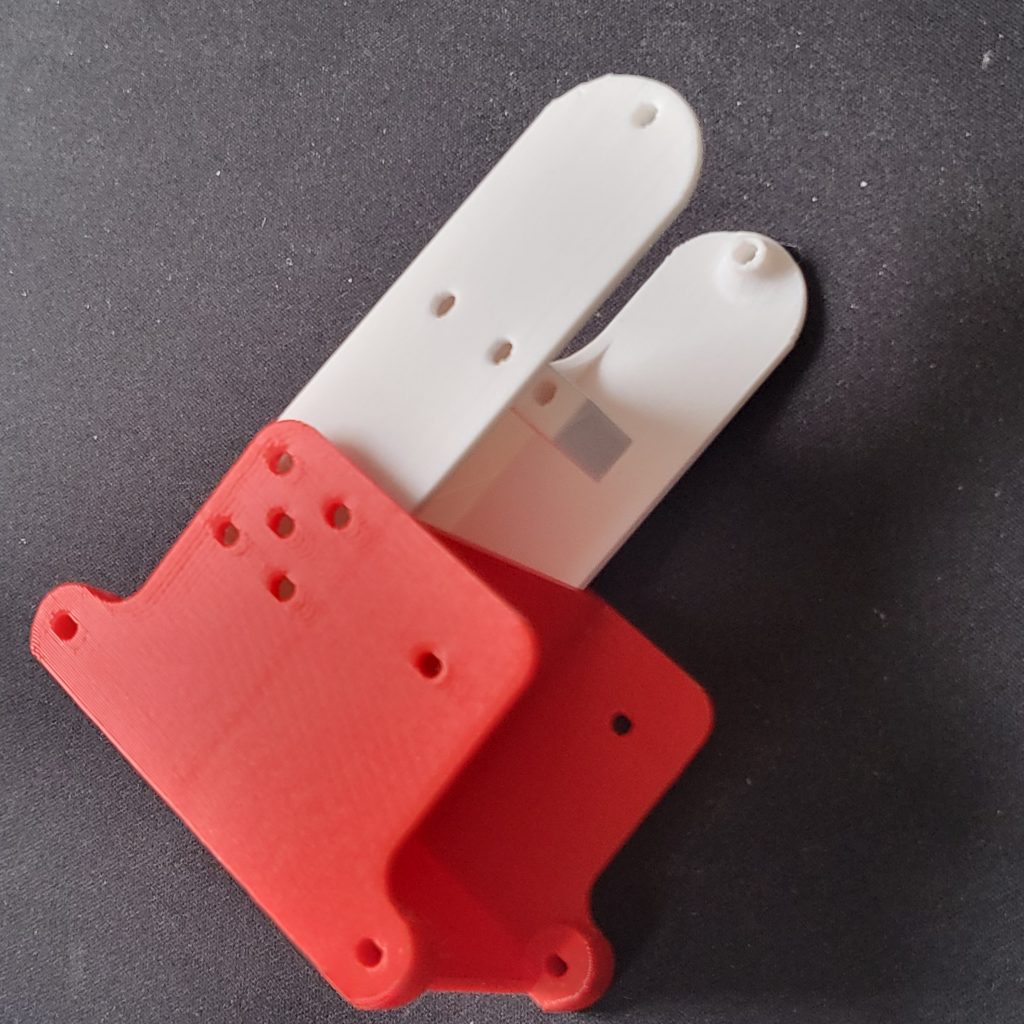Usually I’m designing from a “geometric requirements first” perspective to understand the relation of parts first, next I want to get the attachments stable so that screws etc really sit tight and won’t wobble. Finally, there’s the overall-system perspective: does the part in conjunction with the others and while the robot is moving the right thing?
I’ve been there with the last version of the knee. Then I found out that for the over-arching goal namely to walk towards a toy ball, pick it up and carry it away, I need to let the lower and upper leg fold 180°.

So I redesigned the sides of the knee to get there. When I was done, I noticed that the U shape is still rather wobbly and from the 180° perspective it would be okay to add a wall between the sides of the knee, here’s the evolution in less than a minute:
When changing the part with Kayra’s current knee, I noticed the following design fail:
The interesting thing is that actually, the simulation in MuJoCo could’ve told me that right away:
My key learning here is that I’ll move away from design-print-assemble to design-simulate-print-assemble to iterate faster and reduce dumb design mistakes…
Leave a Reply